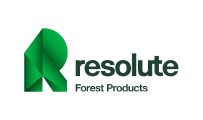By Nikos Avlonas, President and Founder of CSE
Sustainability is a continuous process that iterates on itself, meaning if you report this year, you’ll want to do so again next year. What other steps might there be in the process?
- Educating leadership
- Evaluating existing initiatives
- Assessing the needs of stakeholders
- Developing a strategy to integrate sustainability plans and business plans
- Reporting
- Learning from the process
- And again…
Which of these and other steps are most important?
Increasingly, stakeholders are actually investors – those people who are funding projects with green bonds, purchasing stock, granting loans, or representing family offices.
These stakeholders are increasingly sophisticated in performing due diligence based on sustainability criteria such as Environment, Society and Governance – ESG. To complicate matters, what is key to one group performing due diligence may be different from another. Most often these differences manifest industry by industry.
SASB’s (Sustainable Accounting Standards Board) interactive map listing important material issues by sector and sub-sector is a good first start to guide a company in performing a Materiality Assessment. Identify key stakeholders and ask which sustainability issues are of most concern to the stakeholders which can affect your bottom line. Narrowing concerns to the most relevant, gathering data and analyzing that data for policy guidance takes a level of expertise most organizations lack. Specialized training and engaging experts while the company builds institutional knowledge is imperative. And, the process, as per the GRI (Global Reporting Initiative) needs to be completed at least every 2 years.
So, you know what your stakeholders need to make informed decisions. You’ve gathered the data, assessed what is lacking and made plans to incorporate greater sustainability initiatives to meet their needs. Now, how do you let your stakeholders know?
Sustainability Reporting is key. Good sustainability reporting requires one follow a methodology, such as GRI. Between picking a methodology and receiving external assurance lays the area of organizing the data, presenting it in a manner most approachable by the key stakeholders, ensuring transparency and appropriately reporting both the good and the bad of the company’s sustainability journey. As with materiality assessment, the process is part formula, part expertise and part art. As with materiality assessment, the use of expert consultants is a formidable route to gain the needed knowledge base.
Without a Materiality Assessment and Sustainability Reporting, one’s sustainability process flounders. Make sure the effort and expense are well executed and deliver the best returns.







